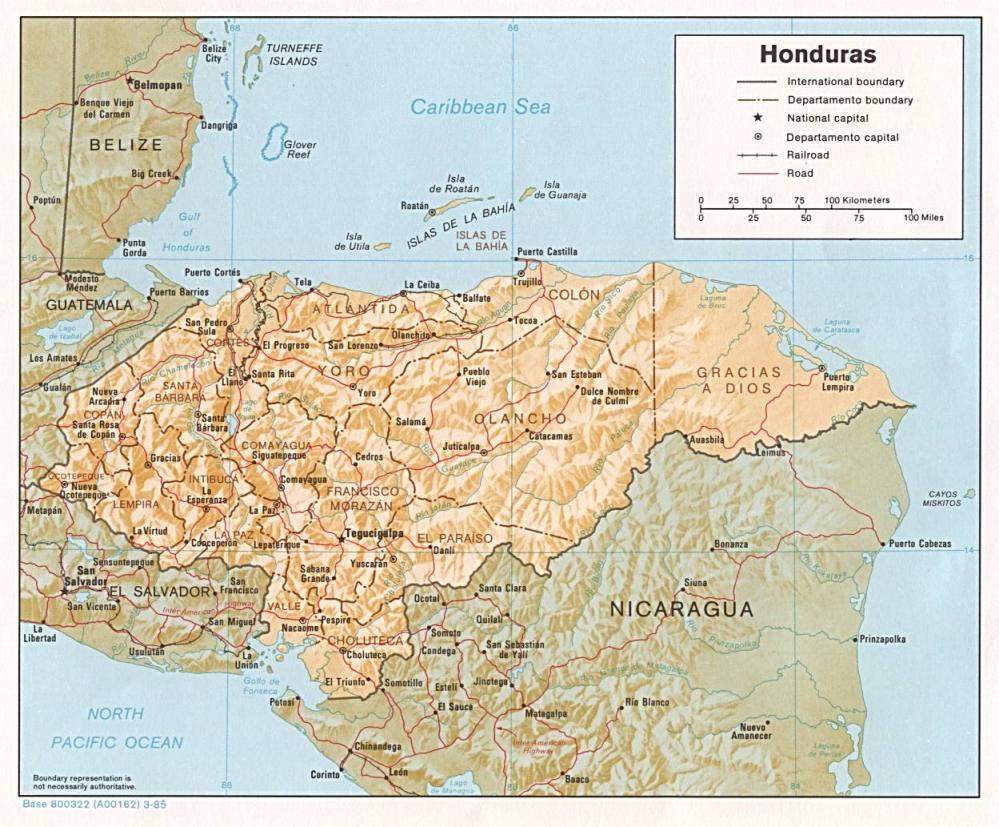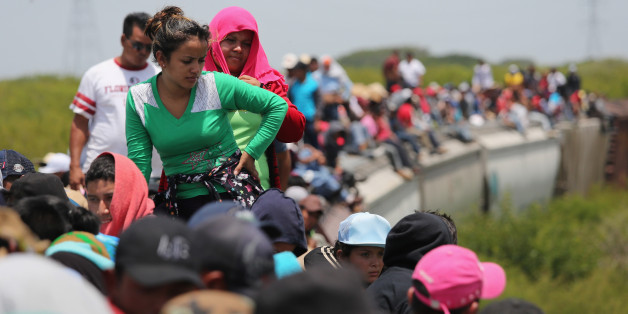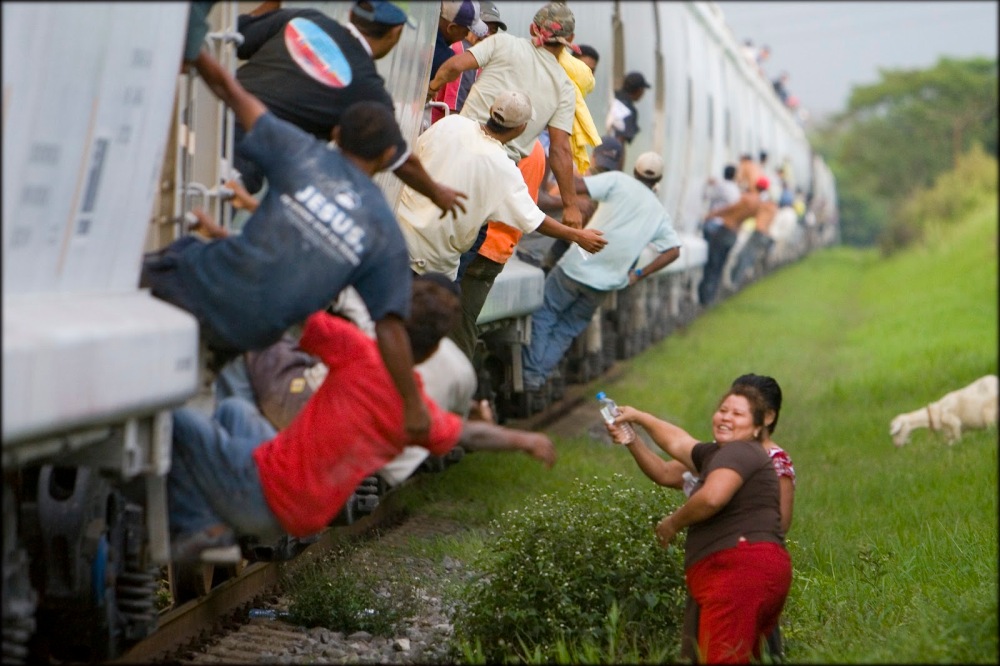 Topics
Topics
- Overview of case study: Immigrant women & the resistance of Campesinas community work
- Central American Immigrant Women’s lack of safety and violation of human rights.
- Media labeling
- Unethical labeling
- Symbolic violence
- Foreign and national policy in the Central American Triangle: Honduras, Guatemala, San Salvador
- Free trade agreements
- Lack of workers’ rights
- Citizen’s services and resources
- Marias’s case in Veracruz
- Gangs that rape women; they sexually and physically abuse them
- symbolic violence by the indignity of rape
- Mexico’s Grupo Beta
- International UN development funding
- National migration institute Sourced at the Grupo Beta s human rights group
- Veracruz Las Patronas
- 20 years of Campesina Organizing for social justice
- Catholic church as a act of social advocacy and outreach for further funding transnational
- Interview with Norma Romero
Research Questions?
What is mass media’s role in mislabeling and expansion in stigmatizing immigrants coming into Mexico and U.S.?
What are the economic and community conditions of Central American Triangle countries?
Why is there a mass economic crisis in this region that displaced people in the need to leave and search for economic survival ?
How “Las Patronas” have created community building efforts to defeat neoliberal policies that demonize sharing food and water, basic human needs?
Overview
According to Huffington post, over eighty percent of women who migrate from Central America are raped by the state or crime gangs or drug cartels. Throughout history there migration of both women and men coming into U.S. and Mexico have been around forty-nine percent women. Within the last six months, the GOP has systematically and repeatedly accused arriving immigrants as those who are “criminals” and as “invasive” by “taking jobs.” These unethical ideologues that label immigrants have created a U.S. national lack of understanding about the structural foreign policy reasons that created the economic crisis the Central American Triangle. The U.S. Public and mass medium has a lack of understanding about the involvement of U.S. policy makers, World Bank, International Monetary Fund that establishes agreements to borrow loans within this region of countries. The language written in this agreement entails the intentional neoliberal agenda to give more access and resources to corporations than people. Within this political and economic arena, corporations make an exponential amount of profit, in return, the local workers lack human rights and necessities for survival. Mexico understands their migration corridor as the most dense in the world and used by Central Americans; therefore, they react with their course of action to address the issue with a human rights rhetoric by the UN development department. With the purpose in following the UN human rights rhetoric, the Grupo Beta was created by the Institute of Migration in Mexico to give medical aid, water and clothing to immigrants . Grupo Beta a lacks clarity about the settlement or deportation process of the immigrants after arriving within Grupo Beta’s space. In reaction to the failed national system to assist immigrants’ human rights, the community of Cordoba creates an organization of campesina women who help their fellow neighboring immigrants with packaged food.

Media and Political labeling
In the U.S. mass media has perpetuated and circulated the label to arriving undocumented immigrant as “job robber” and “criminal.” In response with the U.S. presidential campaigning race, the republican presidential representatives have initiated a neoliberal and xenophobic agenda to purposefully stigmatize arriving Central American undocumented immigrants. The reasons these two forces have initiated a rhetoric attack towards immigrants from this region is to not bring light to the U.S. corporations and U.S. policy makers involvement with ostracizing and failed policies that have created mass corruption of organized crime, mass rape of women and girls, exploitation of workers, and the lack of public services. This symbolically violent language has created the public to react in mass hysteria and over awareness of the label, but not the structural issues and core root that created the economic crisis in the Central American Triangle.
Foreign and national policy in the Central American Triangle: Guatemala, Honduras & San Salvador
International neoliberal policies have created national economic restructuring within this region that has devastated community living conditions by the lack of economic opportunity concluding to inability to survive. The IMF, World Bank, and the U.S. came into agreement to lend immense loans with ostracizing policies to the Central American Triangle (Chang 101).Neoliberal policies entail the loss of governments servicing citizens with free or low cost public services. Citizens within this region have a loss of labor rights over the new laws protecting corporate consumption and manufacturing rights to commodify raw resources and make exponential profit (Abrego lecture). The region furthered economic restructuring by changing the currency to the U.S. dollar furthering economic loss with high inflation on food, gasoline, and inequitable low wages to assist nuclear family economic survival (Chang 110). This restructuring focus on increasing the economy’s GDP and creating new development at a fast pace as a solution in response to the economic crisis. This response does not take into account the integration of society and labor policies comprehensively to accommodate families’ needs to survive economically.
The free trade and the loss of export and import tariffs expanded the Central American Triangle’s economy entrance to the free trade in the global market. Globalization as defined prior, is how foreign corporations,Global North origin, come into the Central American Triangle , the Global South, expand capitalism with the assistance of neoliberal policies to allow the applicable arena for corporations to thrive exponentially (Chang 112). Globalization and Neoliberalism also ties into the lack of access to migrate to people during an economic crisis due to high cost the application fee.
Immigrant women are displaced from their homeland, their culture, their motherhood, and their nuclear family. Migration is gendered, while men immigrate for political asylum to refuse to join the military, police force, or gangs, on the other hand, women immigrate due to the lack of food and equitable public services, the survival of her family (Abrego 114). Immigrant women are more vulnerable to be physical and sexual violence by drug cartels, MS 13 , corrupt military , and corrupt police who are in many cases involved with organized crime. Due to the economical constraints, these women from the Central American Triangle immigrate for economical opportunity to work in Mexico’s borderland Maquiladoras, or to the U.S. for sewing jobs, domestic jobs , and agricultural jobs (Abrego 156).
Maria’s case in Veracruz
In “Crossing Borders” we are shown the case of Maria, a Honduran immigrant and mother, Maria crosses Honduras and Guatemala in hope of economic stability to support her family. Maria decides to ride La Bestia from Chiapas to Veracruz where she stops and explains her experience with the documentary’s filmographer. Maria explains that within the group she was travelling in they decide to come down the Train where they are stopped by MS 13. Maria is raped by two men and explains her shame and the loss of dignity of her body being demoralized. The loss of self dignity has created Maria’s inability to identify as housewife and mother. Her purity according to her cultural values was removed by her body being touched not by her husband. Maria demonstrates that she does not feel that her value is dignified enough with the loss of purity into coming back home to rear her children. Maria experience has created her to not identify herself as pure in physical body and pure in morals (Abrego Lecture).
La Bestia
The immigrant utilizes the dangerous and violent train system named ,La Bestia. The trip begins in Chiapas with a 1400 miles trip with high speeds, dense cargo , and people on top of the train trying to arrive to refugee where they can be economically stable and provide for their family( Abrego 110) . The Mexican Corridor is the busiest migration pathway with an estimated yearly half a million migrants utilize that easily decapitates succumbing halts and startling fall to the trail tracks .
Mexico’s Grupo Beta
The institute of Migration in Mexico crated the organization Grupo Beta to manage the services and needs of immigrants. Grupo Beta does not acknowledge the structural reasons and foreign policy that has created the economic catastrophes in that forced displacement of Central Americans. The group does address human rights needs to give clothing, food, water, and medical aid to immigrants (Gobierno Mexicano Website)(Pessar 12). Grupo Beta also highly discourages people to ride La Bestia as their travel system to immigrate. The organization does not state the settlement process and deportation process after the immigrant receives services from Grupo Beta. The space from Grupo Beta is a not a safe sanctuary for the immigrants in many occasions where they are in danger of being sent back home by Grupo Beta contacting the local law enforcement (Stanton 1).
Cordova, Veracruz, Mexico: Las Patronas

In the Interview with Religion Digital Radio with Norma Romero one of the core founders of Las Patronas speaks about their experience of twenty years of giving shoes, clothing, medical aid, and food like beans and rice to displaced immigrants riding La Bestia. Las Patronas took into consideration the humanitarian need for Central American Immigrants and Mexico’s draconian policy to implicate legal action and incarcerate those citizens that help fleeing immigrants. Norma speaks about her childhood as a campesina in a campesino household as understanding to eat as a “primordial need”. One day while coming back from buying milk and bread, she was stuck on the other side of the train, La Bestia, to cross back home when immigrants with different facial phenotype and foreign Spanish lisp began to ask “madre dame de comer por favor.” Norma’s reaction was to feed these hungry people but she became interested in understanding the international diplomacy in why this consistent pattern of migration was occurring from the Central American Triangle. Norma decided to help her community build an organization named Las Patronas, fourteen community women leaders of Cordova, who have land where they either sale their produce for a profit or use their fruit and vegetables to give to the immigrants. The profit made is utilized to buy beans, rice, cooking oil, clothing , medical aid. Norma goes onto to the university campus to connect and create advocacy with youth about current conditions in the Central American Triangle to solidify the need for people to donate cooking oil to make rice and beans, shoes and clothing for immigrants. Daily, La Bestia crossing by Cordova has a total of 800 passengers while Las Patronas try to give out as much food and water as possible to these displaced immigrants. She finalizes her interview by bringing in the need to be in solidarity for any immigrant that needs economic stability to provide for their family’s survival in which comprehensive immigration would solve this issue. Unlike people like “Trump” she states that they brainwash wrong stigmas and labels about immigrants creating a division of humanity and a hate towards a group of people that is unethical. Instead, people need to be educated into knowing that immigrants do not want to leave their nuclear family or their homeland they love, they immigrate for survival.
Bibliography
Abrego, Leisy. “Sacrificing Families: Navigating Laws, Labor, and Love Across Borders” .2014. Online eprint.
Abrego, Leisy. “Migration in Central America.” Chicano/a 10 B Course. UCLA, Westwood. 13 Jan. 2016. Lecture.
Chang, Grace “Disposable Domestics: Immigrant Women Workers in the Global Economy”. Introduction.pp.96-112;
“El INM Se Suma a La Innovación; Todos Los Trámites En Un Solo Sitio.” Instituto Nacional De Migración. Grupo Beta, n.d. Web. 15 Feb. 2016. <http://www.gob.mx/inm>.
“Gracias Madre – Documental.” YouTube. YouTube, 29 May 2014. Web. 15 Feb. 2016. <https://www.youtube.com/watch?v=NdYVfeDkb8g>.
“LAS PATRONAS.” YouTube. HBO Documentaries, 20 Feb. 2015. Web. 15 Feb. 2016. <https://www.youtube.com/watch?v=DWcRz9AaT4U>.
Pessar, Patricia R. “Expert Group Meeting on International Migration and Development in Latin America and the Caribbean.” UN Population Division Department of Economic and Social Affairs (n.d.): 1-26. 28 Nov. 2005. Web. 15 Feb. 2016.
Romero, Norma. “Las “patronas” De Veracruz.” YouTube. YouTube, 1 Sept. 2015. Web. 15 Feb. 2016. <https://www.youtube.com/watch?v=Xvl7FfZ91L0>.
Staton, John. “Mexico Has Brutally Choked Off The Flow Of Undocumented Immigrants Into The U.S.” BuzzFeed. National Press Foundation, 7 Dec. 2014. Web. 15 Feb. 2016.
“The Banana Republic.” Wikipedia. N.p., n.d. Web. 15 Feb. 2016. <https://en.wikipedia.org/wiki/Banana_republic#/media/File:Honduras_rel_1985.jpg>.